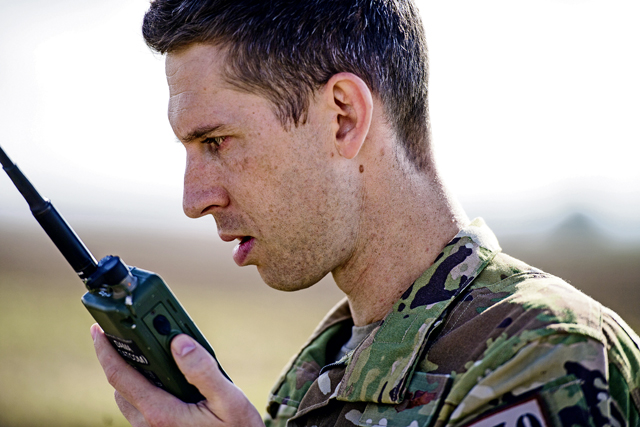Ramstein Airmen assigned to units within the 4th Air Support Operations Group and 435th Contingency Response Group conducted a joint airborne insertion over Alzey Dropzone, Sept. 30.
The airborne insertion training allowed contingency response and Tactical Air Control Party Airmen to sharpen their skills for operating in the European theater.
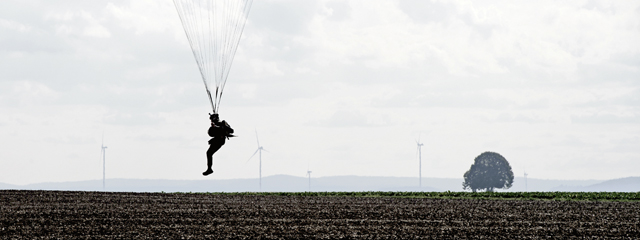
A U.S. Airman assigned within the 435th Air Ground Operations Wing touches down at Alzey Dropzone, Flörsheim-Dalsheim, Germany, Sept. 30. The airborne insertion training included members from the 435th Contingency Response Group and the 4th Air Support Operations Group to integrate their practices for air-ground operations.
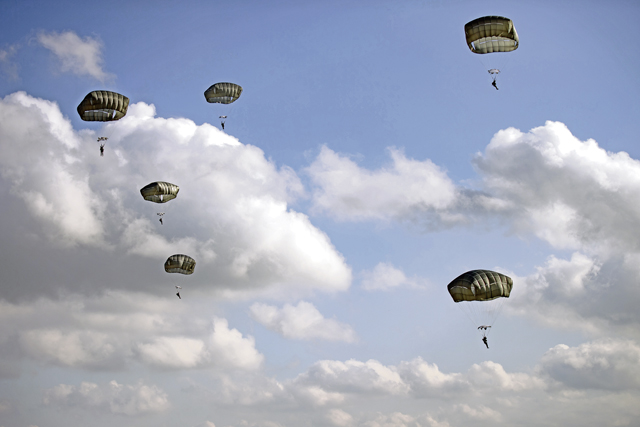
U.S. Airmen assigned to units within the 435th Air Ground Operations Wing descend into Alzey Dropzone, Flörsheim-Dalsheim, Germany, Sept. 30. Once the Airmen touched down, they practiced contingency operations to include long-haul communications. The airborne insertion training allowed contingency response and Tactical Air Control Party Airmen to sharpen their skills for operating in the European theater.
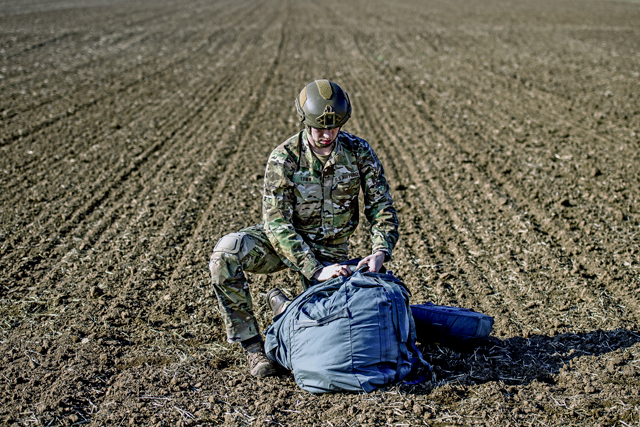
U.S. Air Force Staff Sgt. Mauricio Town, Detachment 1, 4th Combat Training Squadron Joint Terminal Attack Controller field instructor, packs his parachute into a bag after conducting a static-line airborne insertion at Alzey Dropzone, Flörsheim-Dalsheim, Germany, Sept. 30. Airborne insertion is used to quickly get into an austere location to establish an airhead for further operations.
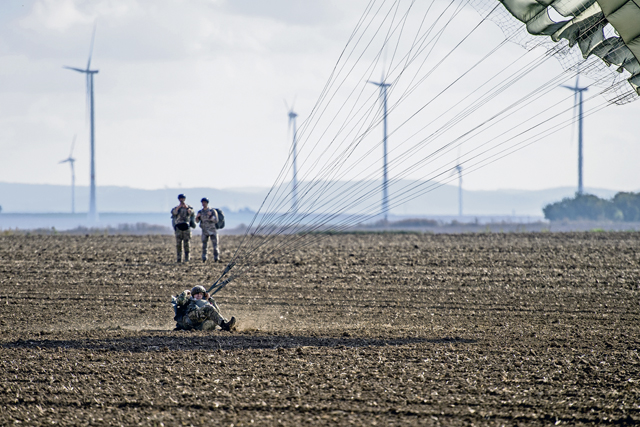
U.S. Air Force Staff Sgt. Mauricio Town, 4th Combat Training Squadron Detachment 1 Joint Terminal Attack Controller field instructor, touches down at Alzey Dropzone, Flörsheim-Dalsheim, Germany, Sept. 30. The Airmen conducted the airborne insertion training to sharpen their tactics, techniques and procedures.
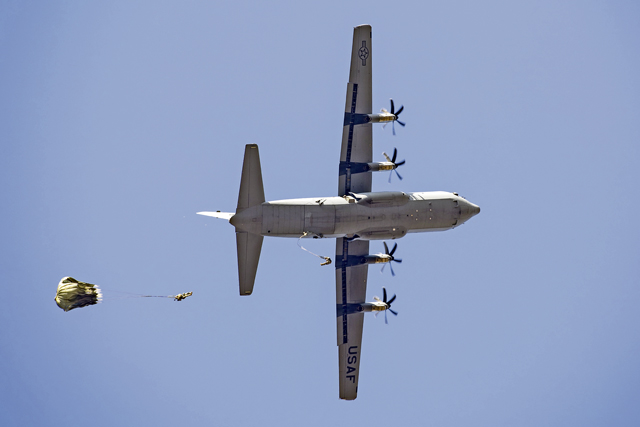
U.S. Airmen assigned to units within the 435th Air Ground Operations Wing perform static-line jumps out of a C-130J Super Hercules aircraft assigned to the 37th Airlift Squadron over Alzey Dropzone, Flörsheim-Dalsheim, Germany, Sept. 30. The airborne insertion training allowed contingency response and Tactical Air Control Party Airmen to sharpen their skills for operating in the European theater.
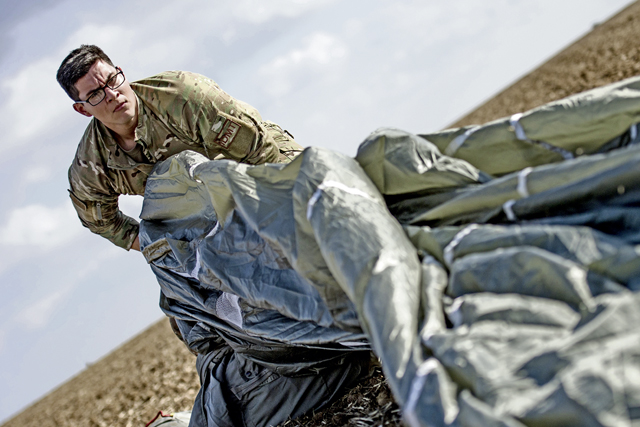
U.S. Air Force Staff Sgt. Seth Allan, 435th Contingency Response Support Squadron independent duty medical technician, gathers his parachute after performing a static-line airborne insertion at Alzey Dropzone, Flörsheim-Dalsheim, Germany, Sept. 30. IDMTs are an essential component for contingency response operations since they are trained on public health functions such as disease containment, field sanitation and the prevention of foodborne illnesses. Their expertise enables their units to continue operations in austere environments.
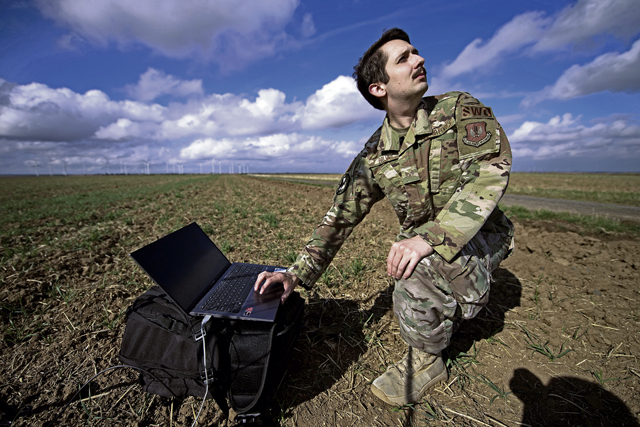
U.S. Air Force Staff Sgt. Casey Brija, 7th Weather Squadron weather forecaster, uses his instruments to measure cloud height, wind speed and wind direction at Alzey Dropzone, Flörsheim-Dalsheim, Germany, Sept. 30. Brija was responsible for collecting weather data to ensure Airmen could conduct airborne insertion operations.

